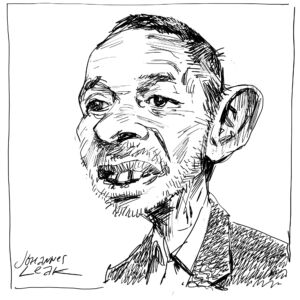It’s marriage, Jim, but not as we know it
The focus on the falling marriage rate misses the point that even when people do get hitched today, they're often still fearful of intimacy.

Want to read spiked ad-free? Become a spiked supporter.
The UK Office of National Statistics has revealed that the number of people getting married has plunged to a record low. Annual marriages have dropped to 244,710, the lowest number recorded since records first started being kept in 1896. One striking fact is that very few people in their twenties are getting married. The average age for first marriage is 31.7 for men and 29.5 for women. ‘Marriage figures a cause for concern’ declare this morning’s newspaper headlines.
Unfortunately, the debate about marriage, the family and personal life has been hijacked by self-serving politicians and various other moral crusaders. Many commentators seem more interested in putting forward ‘positions’ than in genuinely exploring the changing nature of intimate relationships today. So despite all the lamenting about the ‘crisis’ of family life, there lurks a real reluctance to face up to how society has changed, and why these changes have occurred.
Consider the institution of marriage. In the past decade, despite irrefutable evidence of its decline, there has been a tendency to pretend that marriage continues to thrive. In April 2001, clutching at straws, the National Family and Parenting Institute published a report claiming that the UK is keener on marriage than the rest of Europe. A commentary on the report published in the Observer echoed this sentiment under the headline: ‘Why British women love to say “I do”’.
Yet few stop to ask: what does ‘I do’ mean? At a time when more and more people argue that we should have a more ‘realistic’ expectation of marriage, and when influential public figures suggest that the institution should no longer be associated with a ‘life-long relationship’, it is far from clear what people mean when they say ‘I do’ these days.
Marriage is not only in decline; its very meaning has changed. It is regarded very differently today than it was 50 years ago. Younger people have different expectations of marriage than their parents and certainly their grandparents did. Many are aware of the prevailing high rate of divorce and today’s variety of marital problems, and even if they believe that their marriage will be ‘different’, still a general climate of uncertainty influences their expectations.
Regardless of how one views marriage, there is no denying that it has lost influence as an institution. According to a report published by the Institute for Social and Economic Research at the University of Essex in February 2001, one in five youngsters is destined never to marry. The study also found that in 70 per cent of cases, cohabitation was the first type of serious relationship that couples entered into. And although the findings suggested that almost three-quarters of couples living together planned to marry at some time in the future, long-term figures suggested that only three in five cohabiting couples actually made it to the altar – and more than a third of these unions lasted less than 10 years. In 1999, there were 179,000 first marriages in the UK – less than half the number there was in 1970. And since 2001, these trends have become intensified, as demonstrated by today’s revelations from the Office of National Statistics.
Marriage is also losing its link with traditional cultural values. For most of the twentieth century, the vast majority of marriages were solemnised with a religious ceremony. In 1999, around two in five marriages in the UK were solemnised with a religious ceremony. And despite attempts to equate cohabitation with marriage, it seems ‘living together’ can be an even more unstable set-up than getting hitched. According to the University of Essex report cited above, of those couples who regarded cohabiting as advantageous, almost half said it gave them the opportunity of a ‘trial marriage’, while a third said they enjoyed having no legal ties. Seventy per cent of married couples stayed together until their children turned 16, compared with only a third of cohabiting couples.
Specialist research confirms that intimate relationships have transformed a great deal in recent years. Back in 2002, a report published by a think tank linked to the Church of England warned those who underestimate the extent to which marriage has changed to wake up and look at the reality. It noted that supporters of marriage have taken comfort in the fact that ‘the vast majority of couples are married, that most divorcees choose to remarry, and most young people still expect to marry’. The report said: ‘The spread of cohabitation as an alternative to marriage, the increase in couples splitting up and the growth of single households all tell [the real] tale.’ It concluded that ‘marriage is becoming less stable, and is beginning to go out of fashion among the younger generation’.
The debate about the ‘crisis of the family’ has tended to focus on the decline of marriage, the growth of divorce, the rise of lone-parent families, the increase in the number of children born outside of wedlock, and the increase in cohabitation, step-families and other new kinds of family units. This is an old debate, which has been going on in one form or another for more than a century. And such an ongoing preoccupation with the ‘crisis of the family’ means that genuinely contemporary trends are often overlooked.
For example, one development that is rarely explored is the difficulty that adults seem to have in sustaining, not just marriages, but all sorts of intimate relationships. One of the most interesting trends is the growth of single-adult households. Not only are more people choosing not to get married; many are also choosing not to cohabit or to have children. This rise of a single-adult culture suggests that the biggest problem today is not so much a crisis of the family as people finding it profoundly difficult to make and keep intimate relationships. Surveys suggest that almost three in 10 households in Britain consist of one person living alone; that is more than two-and-a-half times the proportion in 1961. It is estimated that by 2020, one-person households will constitute 40 per cent of the total number of households. And it’s worth noting that this growth of single-person households is an international phenomenon, occurring in states as far apart as Japan and the USA.
Maybe we should be most concerned, not with the erosion of the institution of marriage, but with the fact that adults seem to find it difficult, or perhaps are too scared, to cultivate intimate relationships with others.
Frank Furedi is author of Politics of Fear: Beyond Left and Right, published by Continuum (buy this book from Amazon(UK)). Visit his website here.
Celebrate 25 years of spiked!
A media ecosystem dominated by a handful of billionaire owners, bad actors spreading disinformation online and the rich and powerful trying to stop us publishing stories. But we have you on our side. help to fund our journalism and those who choose All-access digital enjoy exclusive extras:
- Unlimited articles in our app and ad-free reading on all devices
- Exclusive newsletter and far fewer asks for support
- Full access to the Guardian Feast app
If you can, please support us on a monthly basis and make a big impact in support of open, independent journalism. Thank you.








Comments
Want to join the conversation?
Only spiked supporters and patrons, who donate regularly to us, can comment on our articles.